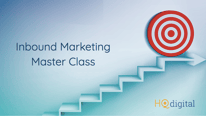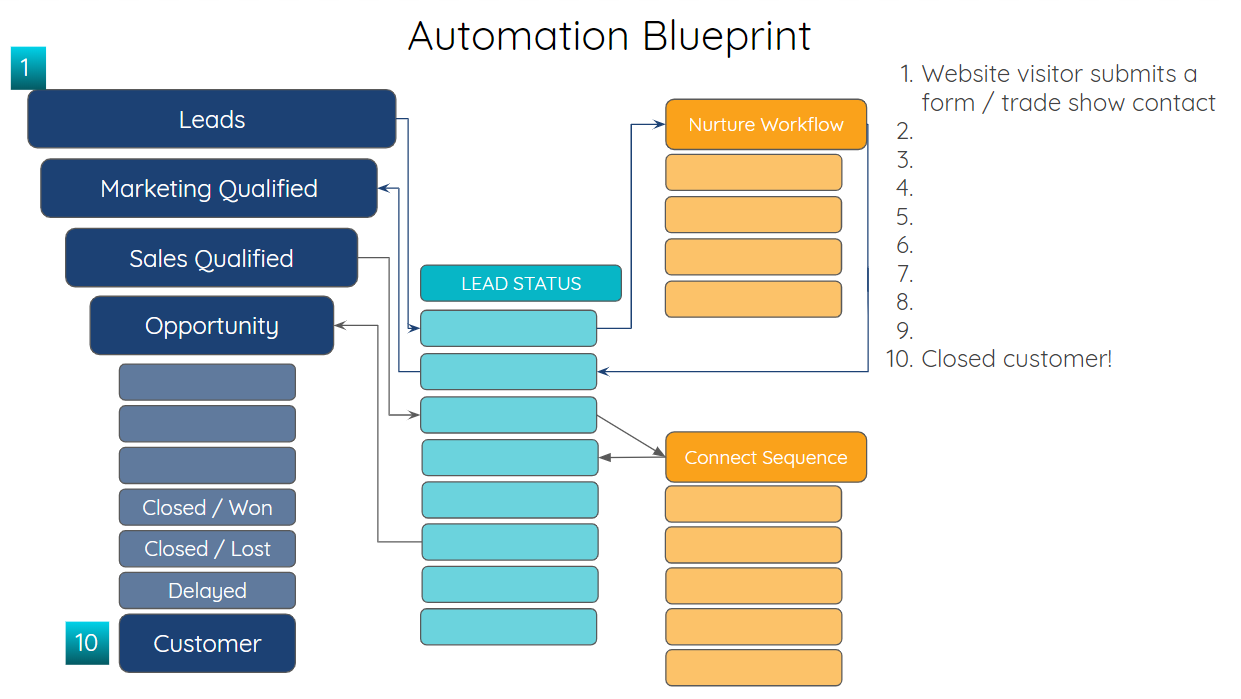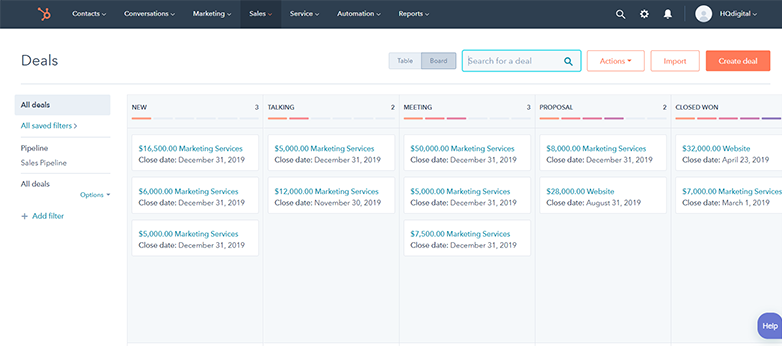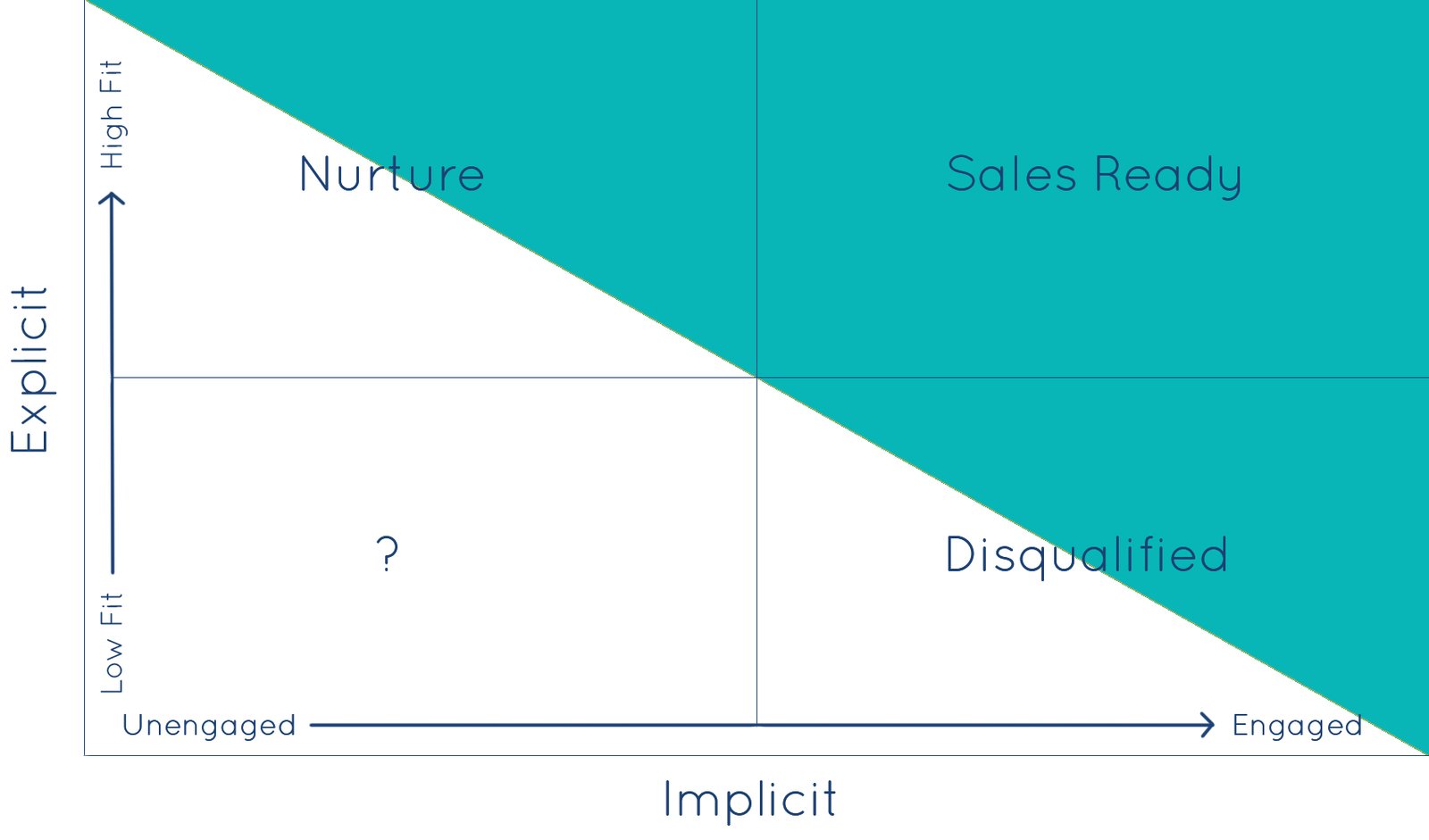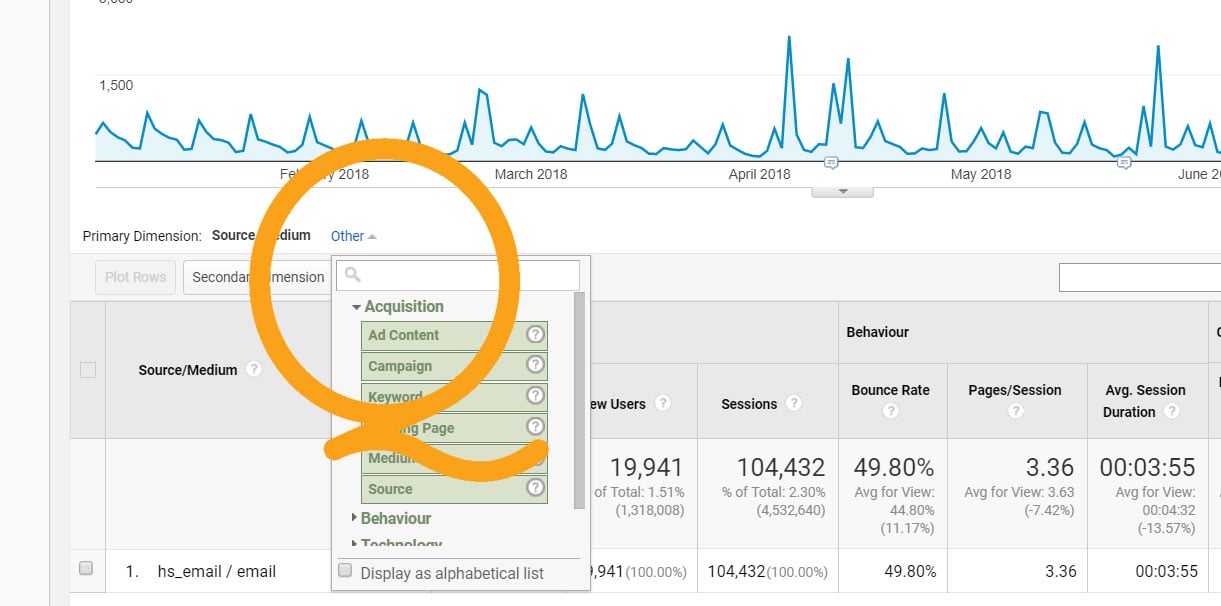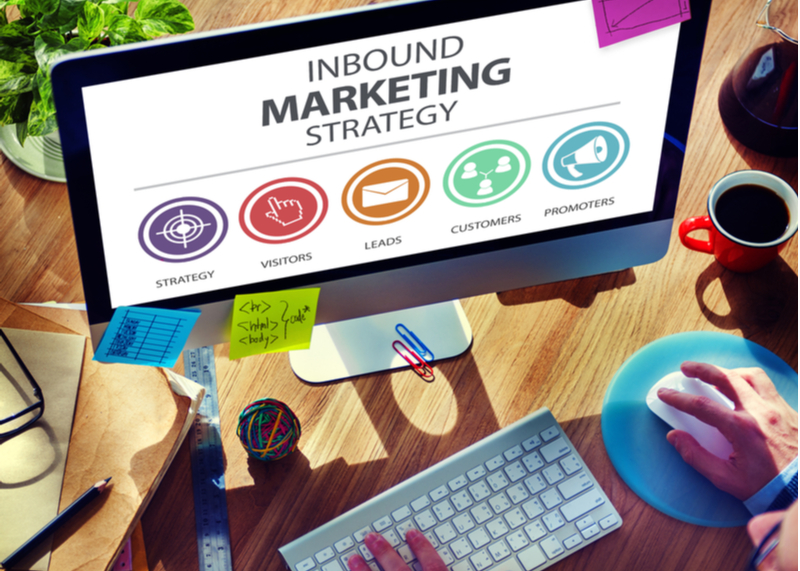
If you're interested in crushing your 2020 growth goals, a killer inbound marketing plan is a no-brainer. Inbound marketing is an impressively powerful lead generation strategy, and as marketing technology advances, the opportunities for impressive results with inbound continue to grow rapidly.
The most challenging aspect of creating an effective inbound marketing plan is usually just knowing where to begin. So we've created this easy-to-follow 10-step guide on how to create a powerful inbound marketing strategy that will rock your organization's sales and marketing world in 2020 and beyond.
1. Set goals
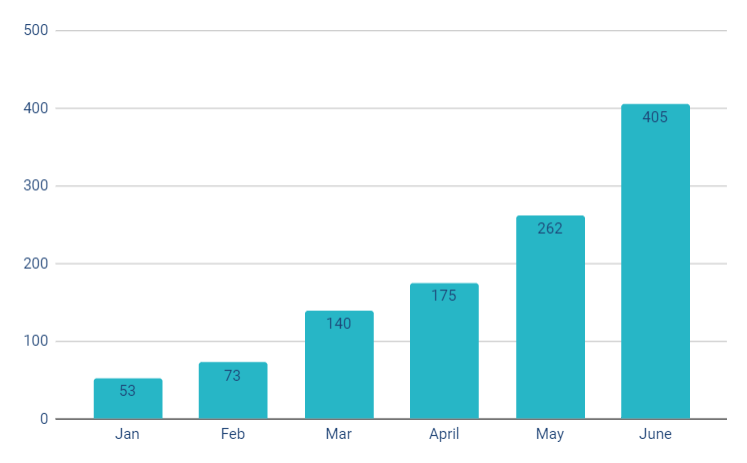 The first thing you need to do when building your 2020 inbound marketing plan is to define your goals for the program. This is really important, for a couple of reasons.
The first thing you need to do when building your 2020 inbound marketing plan is to define your goals for the program. This is really important, for a couple of reasons.
First, writing down your goals and including them in a written plan ensures that all stakeholders are on the same page and allows you to set and manage expectations.
Second, it's important to have an idea of what success looks like so that you can properly build your plan. Companies that want to increase website traffic by 50% are going to need a much more robust inbound plan than companies that are only aiming for 10% visitor growth, for example. Creating goals up front will give your marketing team an indicator of how much inbound content you'll need to create.
Create a monthly projection document that includes current and future website traffic, conversion rates, leads generated, MQLs, SQLs, opportunities, and customers. Create goals for each metric category that are specific, measurable, attainable, realistic, and time-based (SMART).
2. Craft personas
An effective inbound marketing program will always center around developed and documented target personas. Target personas are semi-fictitious representations of your ideal target customers that allow you to more effectively create messaging that connects with your audience.
Target personas don't have to be difficult or complex. Just spend 30 minutes thinking about who your ideal customer is and jot down some notes on:
- Age range
- Job function or title
- Professional background
- Defining characteristics
If you're not sure about some of the information, that's OK! Document what you have. You can always supplement with additional information later.
3. Map your buyer's journey
The buyer's journey is the path a potential customer takes on their route to becoming a customer of yours. In inbound marketing, the buyer's journey is generally thought to exist in three phases: awareness, consideration, and decision. These phases usually correspond with the top, middle, and bottom of the traditional marketing and sales funnel.
In the awareness stage, buyers are just becoming aware of a pain point or problem that they're experiencing, and they're just beginning to conduct educational research around that pain. They are in search of educational information and are definitely not interested in connecting with a salesperson.
In the consideration stage, a buyer has become aware of their pain point or problem, and they are actively researching various solution types to solve it. At this point, they are consuming more middle-of-the-funnel content, such as webinars or case studies, and they are interested in learning about how companies like yours and your competitors can help them. They are still not quite ready to talk to a salesperson, but they are ripe for nurturing.
In the decision stage, the buyer is evaluating their purchasing decision. At this stage, buyers are interested in bottom-of-the-funnel offerings like demos or trials, and they are usually ready to talk to a sales or business development representative.
Each stage is unique, and users in each stage will have different questions and priorities from one another. Therefore, it's important to create a map of what the full buyer journey looks like so that your marketing team can create content to meet buyers where they are in their journey.
4. Research your competitors
Conducting some high-level competitive research is an important element of an inbound marketing plan for 2020 and beyond. At a minimum, scope out the websites of your top three or four competitors and take some notes on things like:
- How big their website is
- How active they are on social media
- Whether they have a blog
- What content offers are available
- What their messaging is
- What they say makes them unique
Understanding this information about your competitors helps you make informed decisions regarding your inbound marketing strategy and allows you to create truly unique content that doesn't feel repetitive or duplicative to prospective buyers.
5. Conduct keyword research
Inbound marketing in 2020 will continue to rely heavily on traffic and leads from organic search, which means that intelligent keyword research is an important piece to include in your plan.
Search engine algorithms will continue to evolve and leverage latent semantic indexing to process and understand natural language. Leveraging keyword research effectively in 2020 will mean truly understanding search intent behind traffic-driving queries.
Organize your keyword research into topic clusters, and evaluate potential keywords based on a few factors:
- Relevance
- Monthly search volume
- Difficulty level
- Current ranking
6. Create a content strategy
Once you've identified who you want to reach and what drives them, mapped their buying journey, and researched the key phrases that they use to search online, you're ready to put together your inbound content strategy, a central document to your plan.
In your content strategy, be sure to include:
- Content offers for all stages of the buyer's journey
- Blogging calendar
- Email marketing schedule
When you're creating your content strategy, also be sure to include plenty of video assets. In 2020 and in the foreseeable future, the internet will be largely made up of video. Quite frankly, if you want to do inbound marketing well, your company needs to embrace video as a central tactic.
Videos as part of an effective inbound marketing strategy don't need to be complicated or even professionally produced. Just a handful of short and sweet, one- to three-minute authentic videos is usually enough to set you apart from your competitors.
7. Develop a website plan
To be successful, an inbound marketing plan can't operate in a silo with little to no integration with your website and other main marketing channels. Ultimately, your entire website should take an inbound approach, and every page should incorporate elements of your inbound strategy.
This is no easy task. To accomplish it, develop an agile website blueprint as part of your inbound marketing plan. Your website blueprint should include a comprehensive list of pages as well as content direction for each page.
For every page, document the target persona, the goal of the page, and any CTAs that will live there. Map relevant content offers to your different pages, personas, and stages of the buyer's journey for best results.
8. Emphasize social

A social media arm of your 2020 inbound marketing plan is a must-have.
Whether you love it, hate it, or fall somewhere in between, the reality heading into 2020 is that consumers spend a lot of time on social media. This is true worldwide, across every demographic. Therefore, it's imperative that the content from your inbound marketing plan get out on the networks where your audience spends its time.
Each social media network has its own unique set of rules, guidelines, and best practices. Be sure to take the time to learn about and understand them first, before posting any content.
Also, before posting, be sure to "listen" to and engage with conversations in your industry. This will give you some credibility before you set out to promote your own content.
When you do start posting, include a mix of your content and content from other organizations. It's also worth mentioning that video content is especially powerful on social media networks, and you'll see substantially better results by including video as part of your social inbound strategy. Use video in your social posts whenever possible.
9. Ensure accountability
Implementation is where strategic inbound marketing plans go to die, so make sure you build in bulletproof accountability to your plan. Otherwise, your plan will sit on a virtual shelf for months or more.
To do it, create an Action Plan section of your inbound marketing strategy document. List all of the tasks that must happen in the first stage of your inbound program, and for each item, assign a primary and secondary owner of the task as well as a deadline. These individuals are the champions of that particular task, and they are responsible for making sure it is completed by the deadline.
Here's a simple example:
| Task | Primary | Secondary | Due Date |
| Develop target personas | Meghan | Lex | 8/1 |
| Map buyer's journey | Lex | Kelly | 8/8 |
| Keyword research | Jason | Meghan | 8/15 |
| Topic development | Kelly | Meghan | 8/25 |
| Full content strategy | Kelly | Lex | 8/31 |
10. Optimize all year
Optimization has always been a huge component of inbound marketing, and this will only continue to be more true in 2020 and beyond. In addition to regularly releasing new amazing content, your inbound team needs to dedicate a large block of its time to optimization efforts once your program gets going. Doing so informs your decision-making and future strategy with real-time data and analytics from your inbound program.
So be sure to have a section for optimization in your inbound marketing plan. In that section, include a list of potential optimization projects for your team. You'll definitely be adding to this list as you roll out the program, but you'll want to have a few starter ideas to make sure your team has areas where it can focus even from the outset.
Some common optimization tasks you can have in almost any inbound marketing plan include:
- Updating historical content for relevancy, SEO, or CRO
- Improving conversion rates on your home page and other key website pages
- Increasing email marketing performance metrics, like open rate and click-through rate
- Adding a conversational marketing (chat) element to your website
You'll need to use a prioritization framework in order to determine which optimization tasks to work on. You have many options, but the one we like and use is called a PIE analysis. PIE stands for Potential, Impact, and Effort, and it's a scoring mechanism that allows us to easily prioritize optimization efforts based on what's going to get the best results most quickly.
And with that, you've got all of the essential elements of a 2020 inbound marketing plan covered! These strategic components, when executed well, will deliver substantial increases in website traffic, leads, and customers in the upcoming year.
One final note - don't skip any steps! The above steps comprise a really simple success formula to follow, but to get impressive results, you'll need to include all 10.
Ready to learn more about inbound marketing to help your organization generate traffic, leads, and customers? Sign up for our free Inbound Marketing Master Class to get six free educational sessions delivered right to your email inbox.


